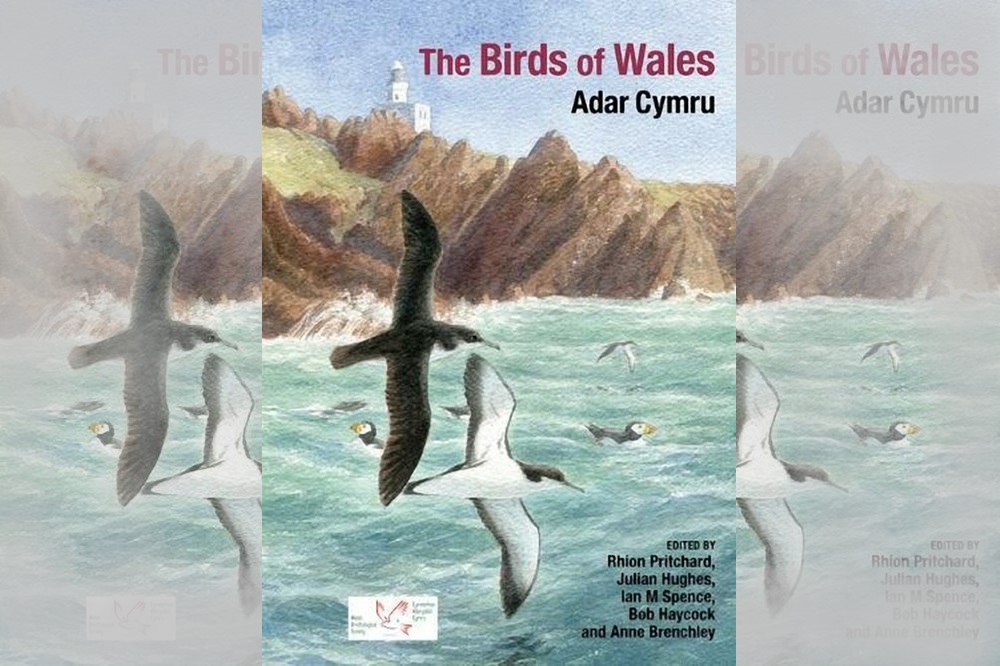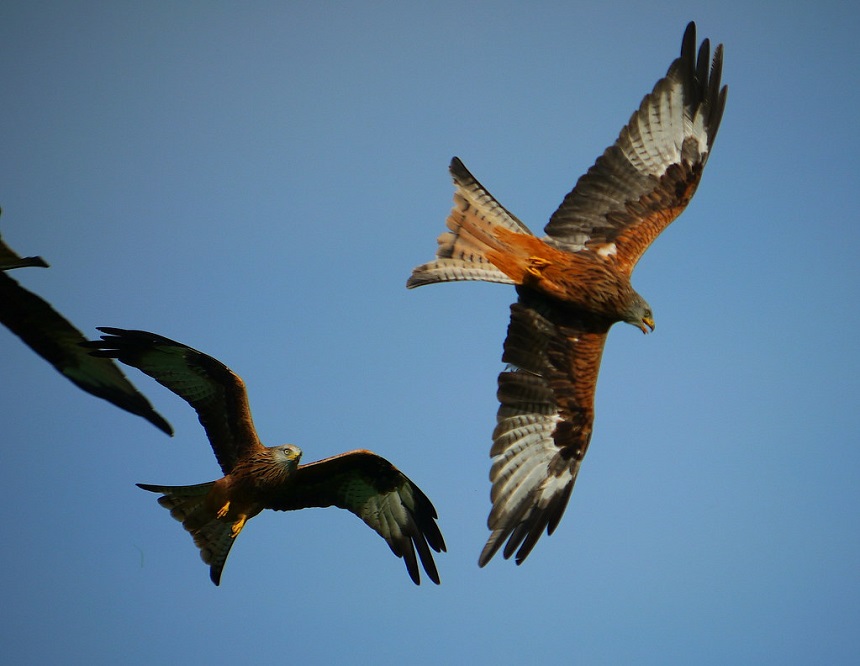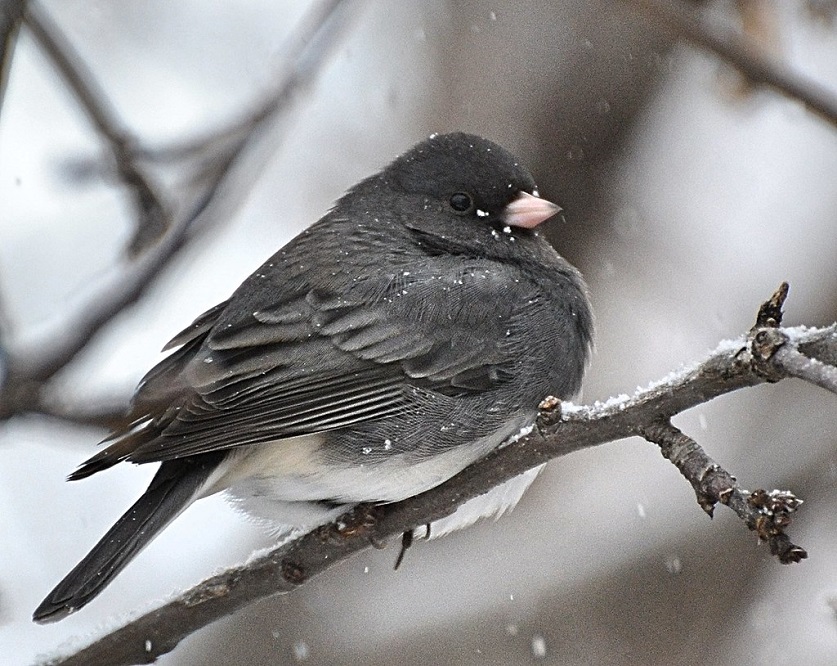Review: The Birds of Wales: Adar Cymru

Jon Gower
It’s now over a quarter of a century since the publication of Birds in Wales (edited by Roger Lovegrove, Iolo Williams and Graham Williams) and much has changed since then. Some birds, such as Lapwings have continued to decline rapidly and now breed pretty much only within the confines of nature reserves, rather than more generally and this a bird which was, for many, a sure-fire sign of spring, as it performed its breeding display like an outsize black and white butterfly.
The numbers of Golden Plover have also plummeted, from 250-300 pairs in the 1970s to fewer than 20 pairs nowadays. But wintering birds have also declined, and counts of birds on estuaries suggest that many birds which formerly travelled to Wales now winter more to the east as a consequence of rising temperatures.
The new account of our country’s avifauna, Birds of Wales: Adar Cymru is a worthy successor and is nothing short of a monumental achievement. It is testament, too, not only to the energy of its editors but also to the legions of birdwatchers and naturalists who have collected the data which underpins it. It is superbly well presented with plenty of clear graphics and is enlivened by photographs such as Steve Wilce’s fine study of a Cuckoo being mobbed by an irritated meadow pipit through Ben Porter’s image of a Little Owl peering out through sprays of gorse flowers which match the lemon pierce of its eyes to the pure white plumage of an Ivory Gull, a rare Arctic species serendipitously snapped by Steve Young at Black Rock Sands in Caernarfonshire.
Bird conservation
The volume is also far from being a long and detailed list: it includes fine and clear-eyed essays by Julian Hughes on such topics as land use, bird conservation, habitats, weather patterns and the history of bird recording which are exemplary in their clarity and concision. This is a very user-friendly book despite its size and scientific approach and its designers are to be warmly commended.
The volume is a register of so much change, most tellingly perhaps in the case of the Red Kite, a bird which for ‘several generations of birdwatchers…was synonymous with Wales.’ Its population grew from what seemed like a terminally endangered ten or a dozen pairs in the oak woodlands of the upper Tywi valley in the 1920s to a situation where they now number some 2,500 pairs. Indeed, on one afternoon in 2010 the skies above the Gigrin Farm kite feeding station near Rhayader were peppered with no fewer than 750 individuals wheeling overhead.

This superb, fork-tailed bird of prey is most certainly an astonishing conservation story, the species now nesting in all counties of the country other than Anglesey and Flintshire but as the book’s account of its rescue, consolidation and spread puts it ‘this is only a matter of time.’ It took a lot of work by a lot of people to reverse the Red Kite’s fortunes. Similar intensive efforts by conservationists from the Clwyd Ornithological Society, the RSPB and latterly, Denbighshire County Council has reversed the fortunes of Wales’ only colony of Little Terns on a pebble beach at Gronant from 2 pairs in 1967 to its status today as one of the biggest in the UK. It’s involved fencing off the breeding birds and employing wardens to keep dogs and their owners away from the nests and eggs not to mention deterring avian predators but it’s worked.
The fortunes of other species have not been so favourable, especially ground-nesting waders which have been in parlous and often speedily accelerating decline. The Curlew is one of these and the estimates and predictions for the species in Wales are nothing short of dire: on current modelling this bird – which once graced so many stretches of moorland and delighted people with its musical call – is set to become extinct in Wales by 2033.
The relative speed of its disappearance is underlined by reading descriptions of it in north Wales at the beginning of the twentieth century as being ‘common, breeding on all the moorland and on some lowland bogs’ to the extent that ‘throughout the summer months the long rippling whistle or the plaintive call of the curlew constantly greet the wayfarer on the moorlands…’ Indeed, so familiar was this, our largest breeding wader that there are no fewer than 30 regional names, along with its own saint, St Beuno, who offered the bird his protection. The reasons for the decline seem to be a lack of chick production because of predation or the destruction of nests by silage operations and while much is being done to arrest the precipitous fall in numbers it is firmly on the Red Data list, which is a roll call for extinction. Other wading birds such as the Redshank have suffered a dramatic fall in breeding numbers.

The Curlew wouldn’t be the first breeding bird to become extinct in Wales. The list of losses in the twentieth and early twenty first century includes ten species such as Corncrake, Turtle Dove and Nightingale. Meanwhile other species have colonised the country. Some of those, such as the raucously loud little Cetti’s warbler, the Avocet and the Mediterranean Gull are Continental species extending their range as climate patterns change. Some species lost to the land also made a welcome return, such as the Goshawk which started nesting again in Pembrey Forest, an event of sufficient excitement that I remember taking the poet R. S. Thomas to look for them in that trademark duffle-coat of his.
While changing local land-use and farming techniques affect the Curlew, the populations of other species are subject to more global changes, not least the effects of the climate emergency. These include a breakdown in the synchronicity between, say Pied Flycatchers hatching their chicks to coincide with an abundance of insect food and a gradual northwards’ shift in the breeding populations of some birds. Some of these changes have resulted in new species moving in to breed.
A sighting of a Little Egret would have been a red-letter day into the 1950s, at which time only 12 had been seen in the whole of Britain. But the number of sightings of this delicate, brilliant white bird gradually built up to the extent that it seemed likely to start breeding in Wales. The first successful breeding in 2001 saw a pair rear four young at Whitston, Gwent followed by ten nestlings the following year. Other counties followed suit, so that by 2017 there were 16 colonies with the largest situated on the edge of the Menai Strait (moving allegiance from the Anglesey side to the mainland) and by now it’s well-nigh impossible to visit a saltmarsh or other suitable habitat without seeing a Little Egret, its plumage often a startling starchy white against the backdrop of dun grasses and dowdy estuarine plants.

One of the joys of birdwatching is the ever-present chance of a rare bird turning up on one’s patch and this book contains plenty of rarities which must have sent the pulse of the spotter racing. The fact that a good few of these turned up on bird tables rather underlines the thrill of the unexpected, such as the Dark-Eyed Junco which appeared in a garden in Dolgellau and the Indigo Bunting from the eastern USA, which stayed obligingly long enough on a bird table in Llansadwrn, Anglesey to be photographed in all its glory.
Then there was the Black Lark a long way from its usual haunts on the steppes of north Kazakhstan which attracted large crowds at the RSPB reserve at South Stack on Anglesey, or the Common Yellowthroat which appeared out of context – and on the wrong continent – when it turned up on farmland at Rhiwderin in Gwent in the spring of 2012. Many other rarities have been sighted on islands such as Skokholm and Ynys Enlli, Bardsey which regularly attract all manner of exotic waifs and strays, especially in the peak migration months of May and October when pretty much anything can turn up and does.
Wales, with its wide range of habitats and network of nature reserves and areas under conservation protection is still a country with a great many ornithological treasures. We have half the world’s population of Manx Shearwaters nesting on our offshore islands as well as important colonies of a range of other seabirds such as Puffins and Common Guillemots.
In the near future new breeding birds might be added to the Welsh list such as Night Heron, which already nests in Somerset and might well start breeding in the reedbeds of south Wales, only a short hop away. Quail, Hobby and Spoonbill might well follow suit as might Black-Winged Stilts, Glossy Ibises and Little Bitterns, all a consequence of rising temperatures. The possibility of re-introducing Golden Eagles and White-tailed Eagles is also a tantalising prospect. The picture of Welsh birdlife is forever changing but this important and boundlessly detailed update underlines the wealth of wildlife yet in our charge, and the urgent need to live up to our responsibilities as its custodians.
The Birds of Wales: Adar Cymru is published on behalf of the Welsh Ornithological Society by Liverpool University Press and is available here… or through all good bookshops.
Support our Nation today
For the price of a cup of coffee a month you can help us create an independent, not-for-profit, national news service for the people of Wales, by the people of Wales.




